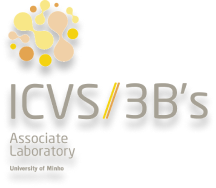Scientific Highlights
1. Cabral J, Hugues E, Sporns O, Deco G (2011) Role of Local Network Oscillations in Resting-State Functional Connectivity. NeuroImage (57) 130-139.
2. Cabral J, Hugues E, Kringelbach ML, Deco G (2012) Modeling the outcome of structural disconnection on resting-state functional connectivity. NeuroImage (62) 1342–1353.
3. Cabral J, Luckhoo H, Woolrich M, Joensson M, Mohseni H, Baker A, Kringelbach ML, Deco G (2014) Exploring mechanisms of spontaneous MEG functional connectivity: How delayed network interactions lead to structured amplitude envelopes of band- pass filtered oscillations. NeuroImage (90) 423-435.
4. Cabral J, Kringelbach ML, Deco G. (2014) Exploring the network dynamics underlying brain activity during rest. Progress in Neurobiology (114) 102-131.
5. Cabral J, Kringelbach ML, Deco G (2017) Functional connectivity dynamically evolves on multiple time- scales over a static structural connectome: Models and mechanisms. NeuroImage, ISSN 1053-8119.
6. Cabral J, Vidaurre D, Marques P, Magalhães R, Silva Moreira P, Soares JM, Deco G, Sousa N, Kringelbach ML (2017) Cognitive performance in healthy older adults relates to spontaneous switching between states of functional connectivity during rest. Scientific Reports 2017; 7: 5135.
7. Deco G, Cruzat J, Cabral J, Knudsen GM, Carhart-Harris RL, Whybrow PC, Logothetis NK, Kringelbach ML (2018) Whole-Brain Multimodal Neuroimaging Model Using Serotonin Receptor Maps Explains Non- linear Functional Effects of LSD. Current Biology.
8. Lord LD, Expert P, Atasoy S, Roseman L, Rapuano K, Lambiotte R, Nutt DJ, Deco G, Carhart-Harris RL, Kringelbach ML, Cabral J (2019) Dynamical exploration of the repertoire of brain networks at rest is modulated by psilocybin. NeuroImage 199:127- 142
9. Deco G, Cruzat J, Cabral J, Tagliazucchi E, Laufs H, Logothetis NK, Kringelbach ML (2019) Awakening: Predicting external stimulation to force transitions between different brain states. Proceedings of the National Academy of Sciences. 3;116(36):18088-97.
10. Kringelbach ML, Cruzat J, Cabral J, Knudsen GM, Carhart-Harris R, Whybrow PC, Logothetis NK, Deco G (2020) Dynamic coupling of whole-brain neuronal and neurotransmitter systems. Proceedings of the National Academy of Sciences, 117(17), 9566-9576.
11. Shine JM, Müller EJ, Munn B, Cabral J, Moran RJ, Breakspear M. (2021) Computational models link cellular mechanisms of neuromodulation to large-scale neural dynamics. Nature neuroscience. 24(6):765- 76.










